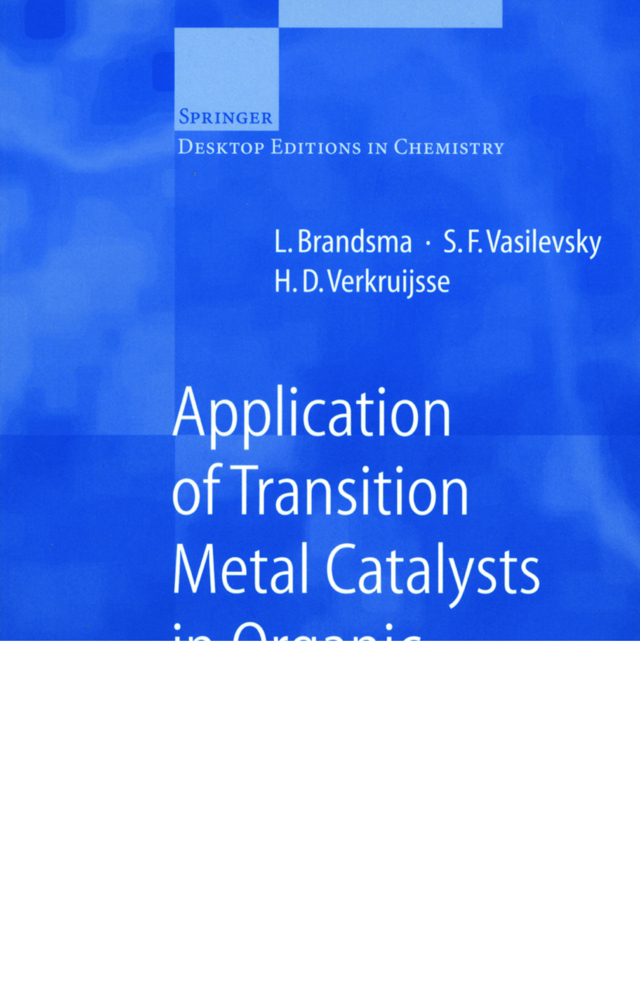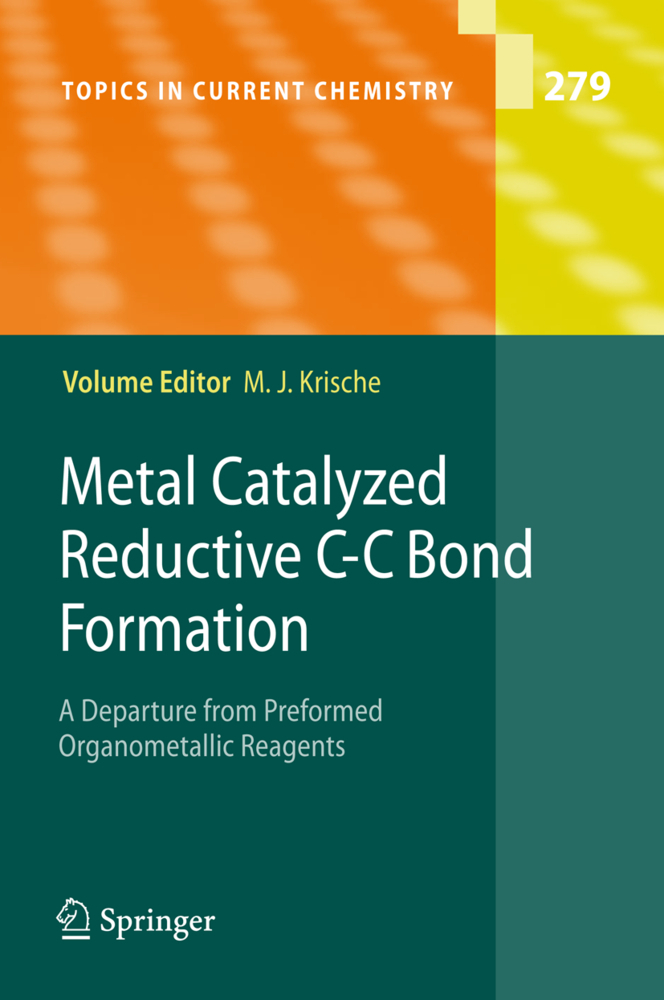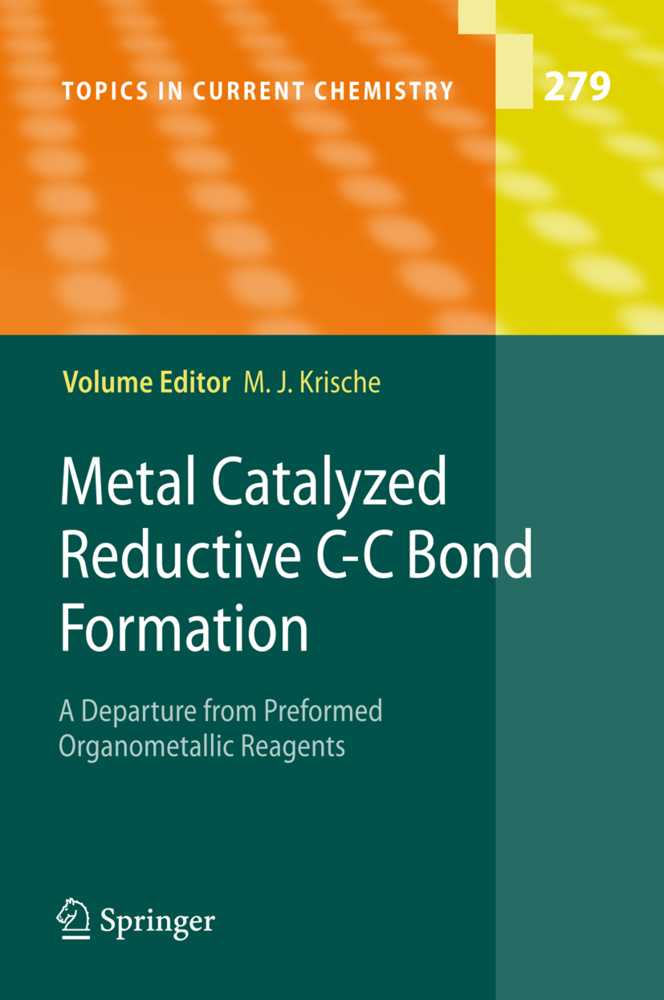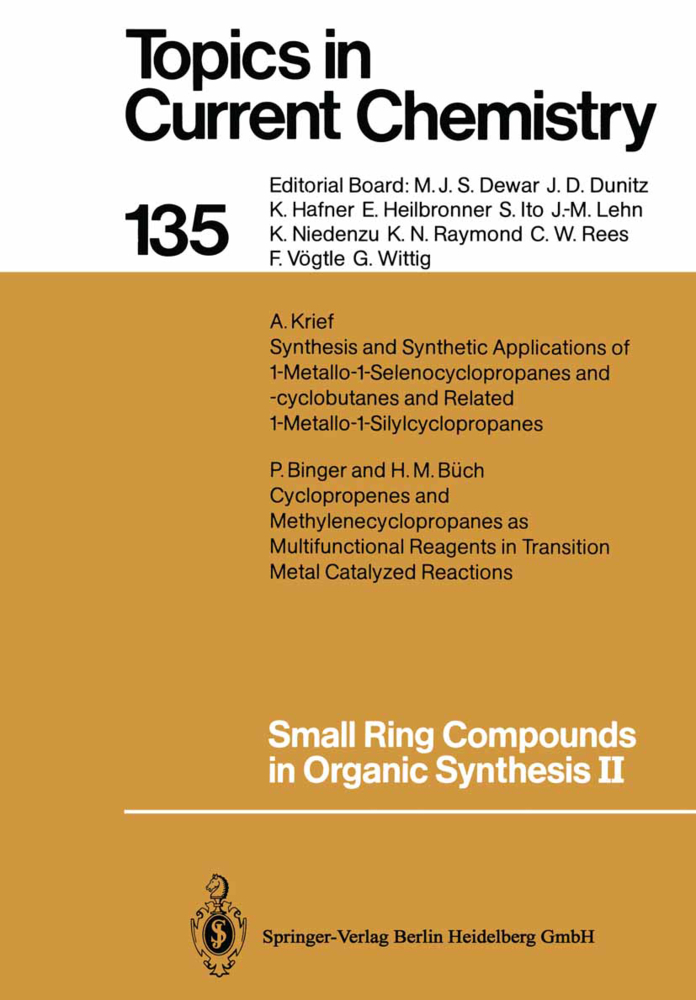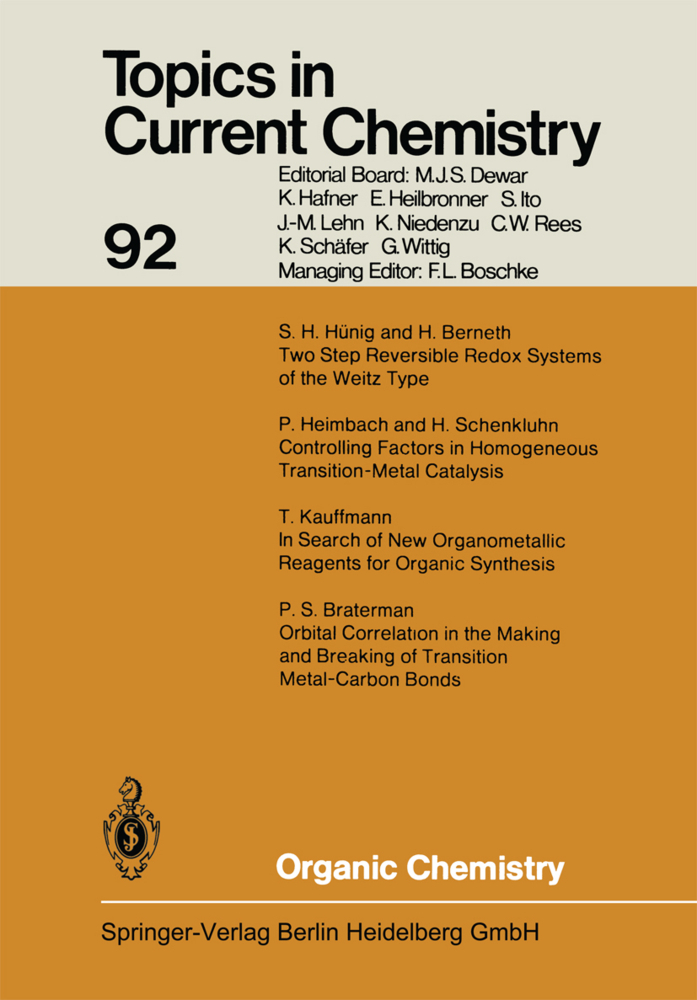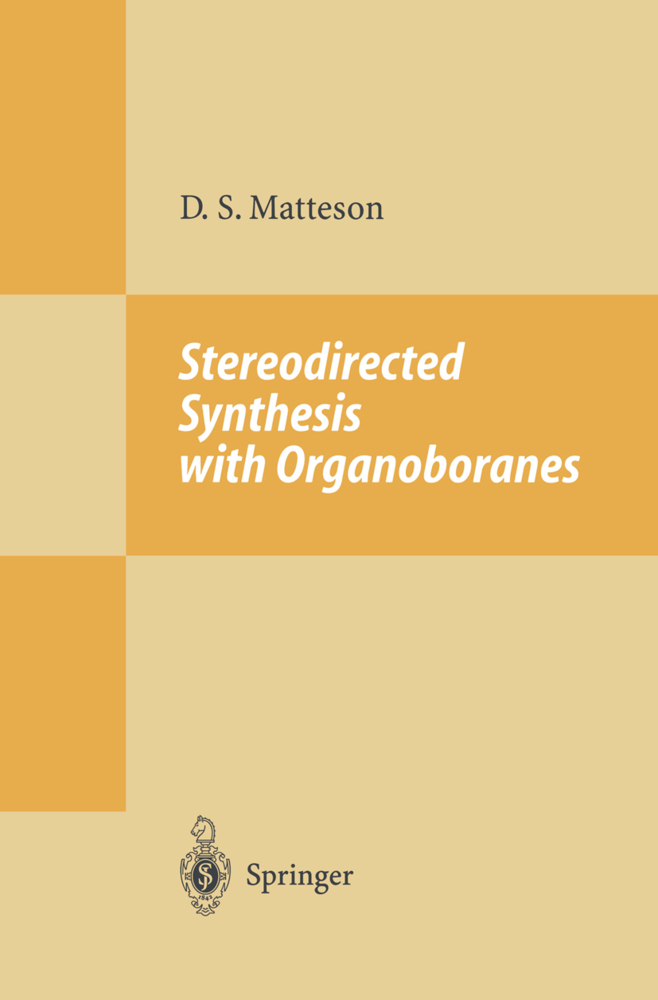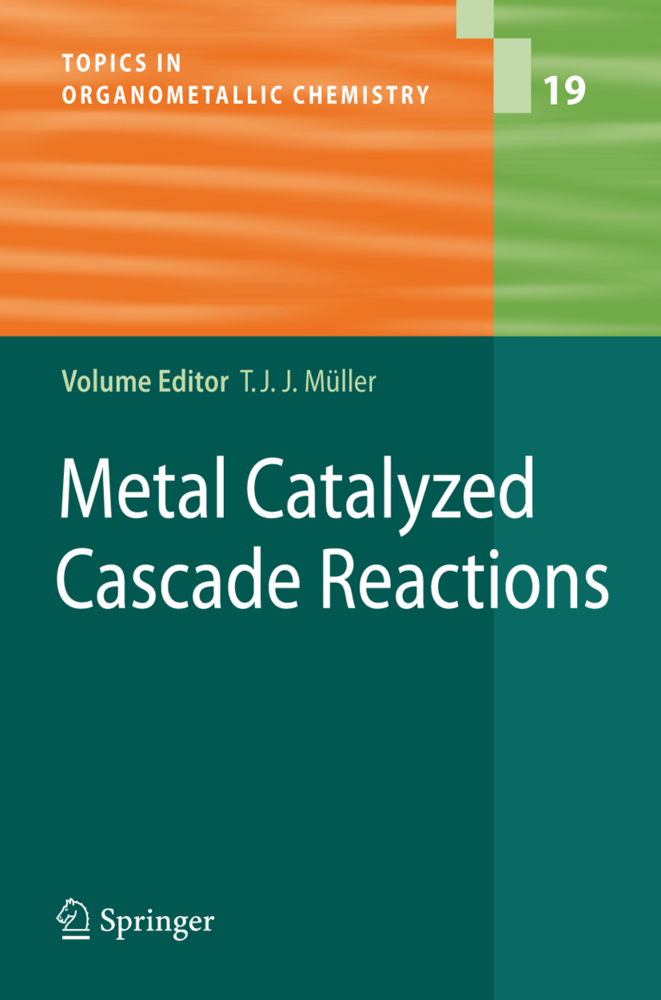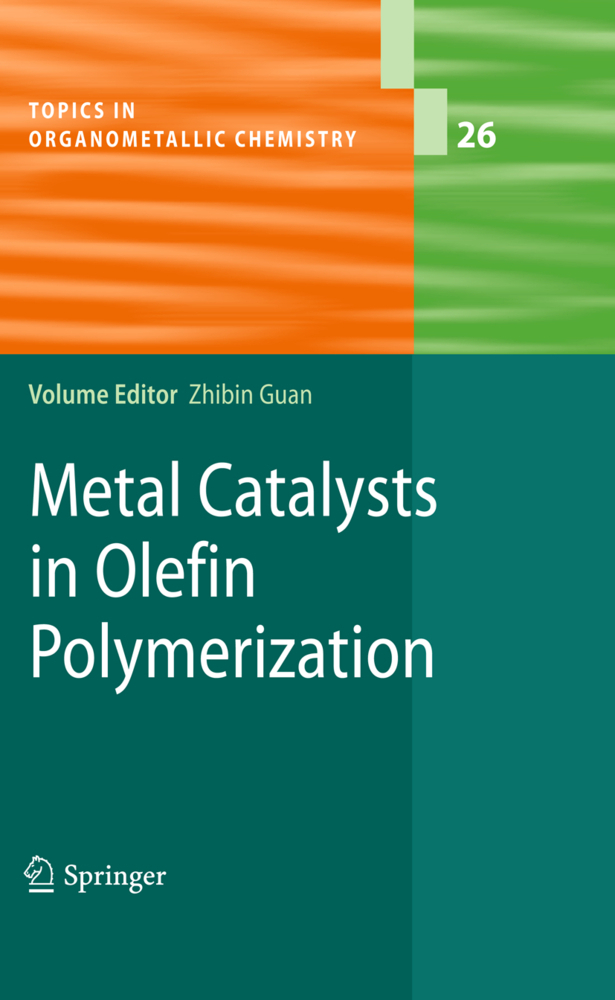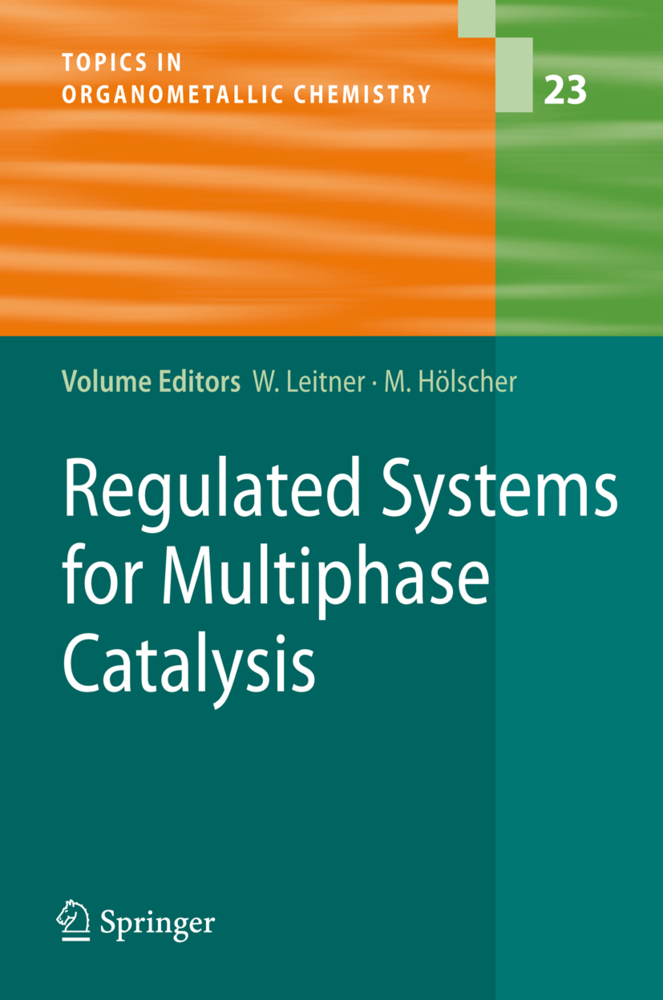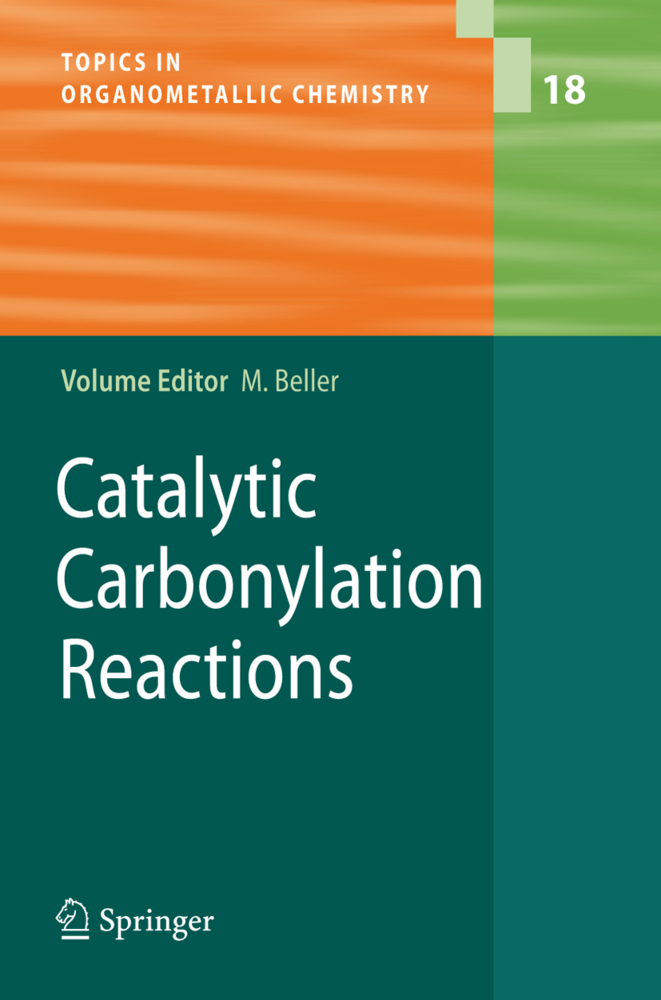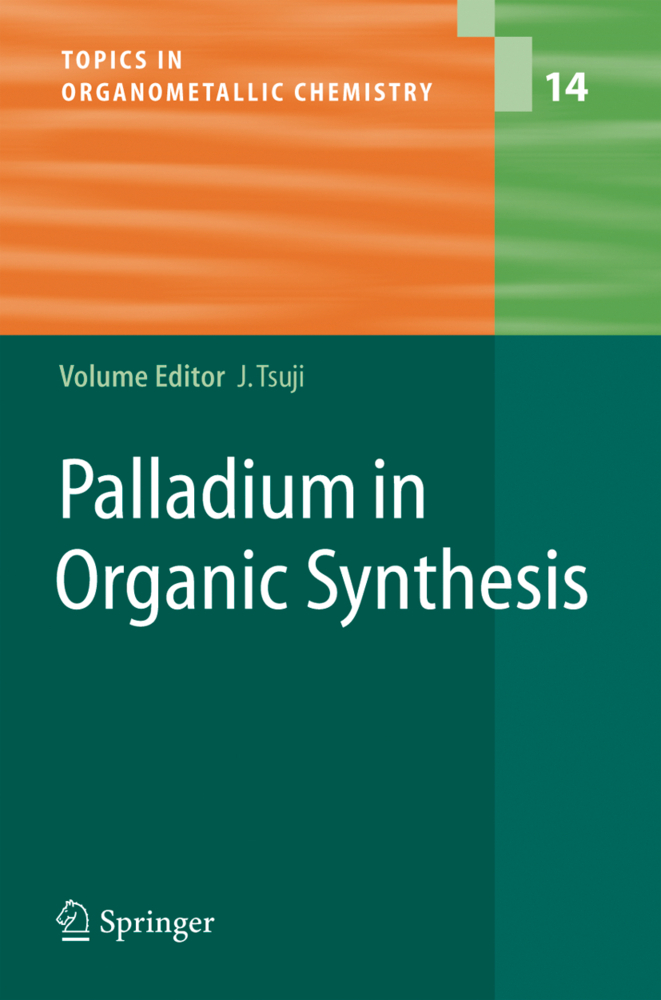Application of Transition Metal Catalysts in Organic Synthesis
Application of Transition Metal Catalysts in Organic Synthesis
Homogeneous catalysis is an important strategy for the synthesis of high-valued chemicals. L. Brandsma has carefully selected and checked the experimental procedures illustrating the catalytic use of copper, nickel, and palladium compounds in organic synthesis. All procedures are on a preparative scale, make economic use of solvents and catalysts, avoid toxic substances and have high yields.
1.2 Ligands
1.3 Organometallic Reagents
2 Procedures for the Preparation of Halogen Compounds
2.1 sp-Halides
2.2 Aryl and Hetaryl Halides
2.3 Olefinic, Cycloolefinic and Allenic Halides
3 Cross-Coupling Between 1-Alkynes and 1-Bromoalkynes
3.1 Introduction
Table 1
3.2 Scope and Limitations
3.3 Relative Reactivities of the Acetylene and the Bromoacetylene
Table 2
3.4 Conditions for the Coupling
3.5 Choice of the Reaction Partners
3.6 Side Reactions
3.7 Experimental Part
4 Copper-Catalyzed Aminoalkylation of Acetylenes
4.1 Introduction, Scope and Mechanism
4.2 Experimental Part
5 Copper(I)-Halide-Catalyzed Oxidative Coupling of Acetylenes
5.1 Introduction
5.2 Methods, Scope and Limitations
5.3 About the Mechanism
5.4 Experimental Part
5.5 Summary of Experimental Conditions for Oxidative Couplings
Table 3
6 Copper(I)-Halide-Catalyzed Substitution of sp2-Halogen by Alkoxide
6.1 Introduction
6.2 Scope and Limitations of the Copper-Catalyzed Nucleophilic Substitution of sp2-Halogen by Alkoxy Groups
Table 4
6.3 Mechanistic Investigations
6.4 Reaction Conditions
6.5 Differences in the Reactivities of the Various sp2-Halides
6.6 Side Reactions
6.7 Applications
6.8 Experimental Part
7 Copper-Catalyzed Carbon-Carbon Bond Formation by 1,1- and 1,3-Substitution Reactions
7.1 Introduction
7.2 Displacement of Halide, Tosylate and Acetate in Saturated Compounds
7.3 Ring Opening of Saturated Epoxides
7.4 Reactions with Allylic Substrates
7.5 Reactions with Propargylic and Allenic Substrates
7.6 About the Mechanism of Copper Catalyzed Substitutions
7.7 Experimental Section
Table 5
Table 6
8 Nickel Catalyzed Iodo-Dechlorination and Iodo-Debromination of sp2-Halides
8.1 Introduction
8.2 Scope and Limitations
8.3 Mechanistic Investigations
8.4 Side Reactions
8.5 Experimental Procedures
8.6 Conclusions from our Investigations
9 Nickel- and Palladium-Catalyzed Cyanation of sp2-Halides and sp2-Triflates
9.1 Introduction
9.2 Scope and Limitations
Table 7
9.3 Mechanism of the Nickel Catalyzed Cyanation
9.4 Methods of Performing Nickel Catalyzed Cyanations
9.5 Relative Reactivities of sp2-Halides
9.6 Side Reactions
9.7 Catalysis by Palladium Compounds
9.8 Experimental Part
10 Couplings of Acetylenes with sp2-Halides
10.1 Introduction
10.2 Mechanistic Considerations
10.3 Scope and Limitations
Table 8
10.4 Relative Rates of Coupling
10.5 Regiochemistry and Stereochemistry
10.6 Synthetic Applications of the Cross-Coupling Reactions with Acetylenes
10.7 Practical Aspects of the Coupling Reactions
10.8 Experimental Section
11 Nickel- and Palladium-Catalyzed Cross-Coupling Reactions with Organometallic Intermediates
11.1 Introduction
11.2 Possibilities of Connecting Organic Groups by Transition Metal Catalysis
11.3 Catalysts and Ligands
11.4 Leaving Groups
11.5 Couplings with Organolithium Compounds
11.6 Couplings with Organomagnesium and Organozinc Halides
11.7 Cross Couplings with Organoaluminum, Organoboron and Organotin Compounds
11.8 Regiochemical and Stereochemical Aspects
11.9 Mechanism and Side Reactions
11.10 Practical Aspects of Transition-Metal-Catalyzed Couplings
11.11 Experimental Section
Tables 9-20
Index of Reaction Types
Index of Experimental Procedures
Complementary Subject Index.
1 Catalysts, Ligands and Reagents
1.1 Catalysts1.2 Ligands
1.3 Organometallic Reagents
2 Procedures for the Preparation of Halogen Compounds
2.1 sp-Halides
2.2 Aryl and Hetaryl Halides
2.3 Olefinic, Cycloolefinic and Allenic Halides
3 Cross-Coupling Between 1-Alkynes and 1-Bromoalkynes
3.1 Introduction
Table 1
3.2 Scope and Limitations
3.3 Relative Reactivities of the Acetylene and the Bromoacetylene
Table 2
3.4 Conditions for the Coupling
3.5 Choice of the Reaction Partners
3.6 Side Reactions
3.7 Experimental Part
4 Copper-Catalyzed Aminoalkylation of Acetylenes
4.1 Introduction, Scope and Mechanism
4.2 Experimental Part
5 Copper(I)-Halide-Catalyzed Oxidative Coupling of Acetylenes
5.1 Introduction
5.2 Methods, Scope and Limitations
5.3 About the Mechanism
5.4 Experimental Part
5.5 Summary of Experimental Conditions for Oxidative Couplings
Table 3
6 Copper(I)-Halide-Catalyzed Substitution of sp2-Halogen by Alkoxide
6.1 Introduction
6.2 Scope and Limitations of the Copper-Catalyzed Nucleophilic Substitution of sp2-Halogen by Alkoxy Groups
Table 4
6.3 Mechanistic Investigations
6.4 Reaction Conditions
6.5 Differences in the Reactivities of the Various sp2-Halides
6.6 Side Reactions
6.7 Applications
6.8 Experimental Part
7 Copper-Catalyzed Carbon-Carbon Bond Formation by 1,1- and 1,3-Substitution Reactions
7.1 Introduction
7.2 Displacement of Halide, Tosylate and Acetate in Saturated Compounds
7.3 Ring Opening of Saturated Epoxides
7.4 Reactions with Allylic Substrates
7.5 Reactions with Propargylic and Allenic Substrates
7.6 About the Mechanism of Copper Catalyzed Substitutions
7.7 Experimental Section
Table 5
Table 6
8 Nickel Catalyzed Iodo-Dechlorination and Iodo-Debromination of sp2-Halides
8.1 Introduction
8.2 Scope and Limitations
8.3 Mechanistic Investigations
8.4 Side Reactions
8.5 Experimental Procedures
8.6 Conclusions from our Investigations
9 Nickel- and Palladium-Catalyzed Cyanation of sp2-Halides and sp2-Triflates
9.1 Introduction
9.2 Scope and Limitations
Table 7
9.3 Mechanism of the Nickel Catalyzed Cyanation
9.4 Methods of Performing Nickel Catalyzed Cyanations
9.5 Relative Reactivities of sp2-Halides
9.6 Side Reactions
9.7 Catalysis by Palladium Compounds
9.8 Experimental Part
10 Couplings of Acetylenes with sp2-Halides
10.1 Introduction
10.2 Mechanistic Considerations
10.3 Scope and Limitations
Table 8
10.4 Relative Rates of Coupling
10.5 Regiochemistry and Stereochemistry
10.6 Synthetic Applications of the Cross-Coupling Reactions with Acetylenes
10.7 Practical Aspects of the Coupling Reactions
10.8 Experimental Section
11 Nickel- and Palladium-Catalyzed Cross-Coupling Reactions with Organometallic Intermediates
11.1 Introduction
11.2 Possibilities of Connecting Organic Groups by Transition Metal Catalysis
11.3 Catalysts and Ligands
11.4 Leaving Groups
11.5 Couplings with Organolithium Compounds
11.6 Couplings with Organomagnesium and Organozinc Halides
11.7 Cross Couplings with Organoaluminum, Organoboron and Organotin Compounds
11.8 Regiochemical and Stereochemical Aspects
11.9 Mechanism and Side Reactions
11.10 Practical Aspects of Transition-Metal-Catalyzed Couplings
11.11 Experimental Section
Tables 9-20
Index of Reaction Types
Index of Experimental Procedures
Complementary Subject Index.
Brandsma, L.
Vasilevsky, S.F.
Verkruijsse, H.D.
| ISBN | 978-3-540-65550-3 |
|---|---|
| Artikelnummer | 9783540655503 |
| Medientyp | Buch |
| Auflage | 1999 |
| Copyrightjahr | 1999 |
| Verlag | Springer, Berlin |
| Umfang | XIX, 335 Seiten |
| Abbildungen | XIX, 335 p. 16 illus. |
| Sprache | Englisch |

